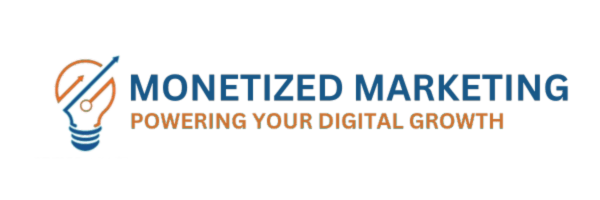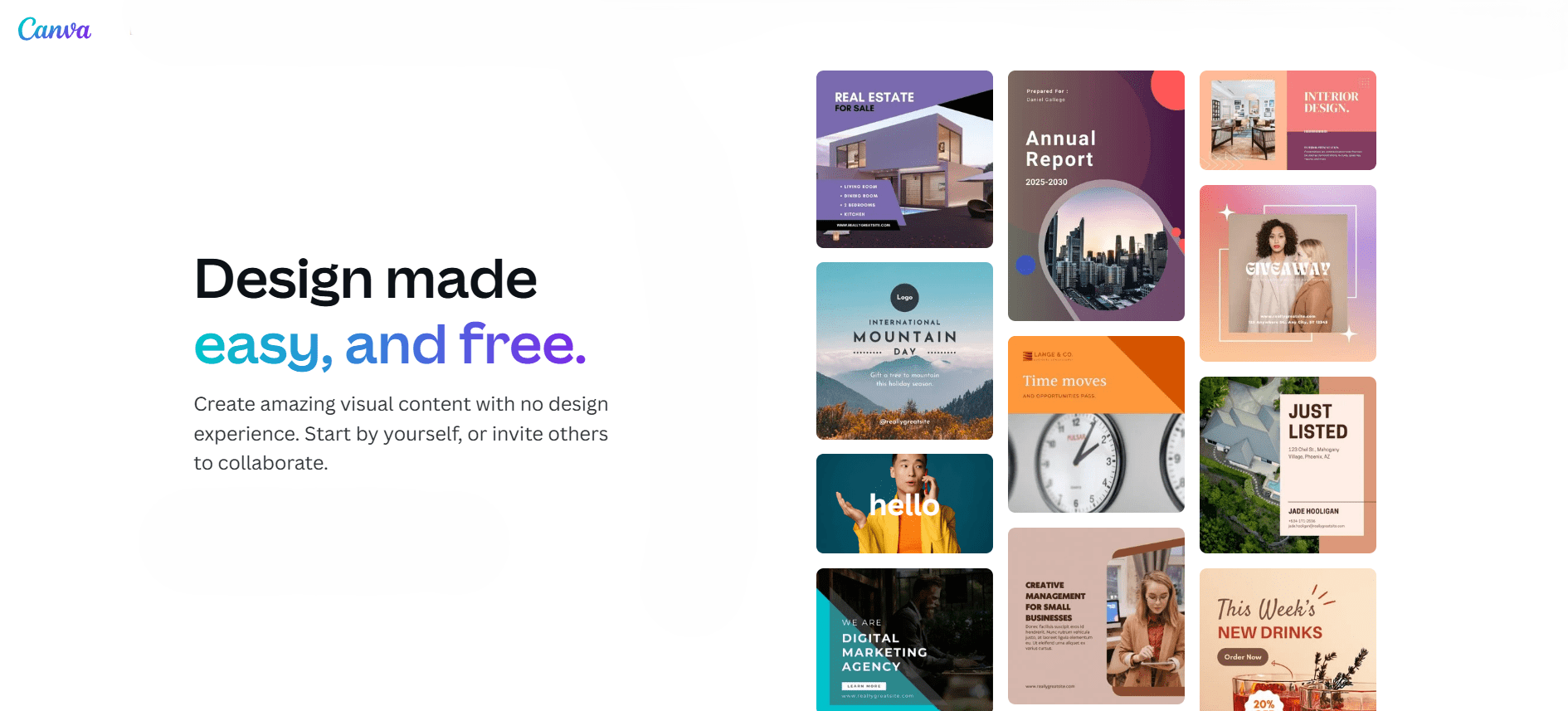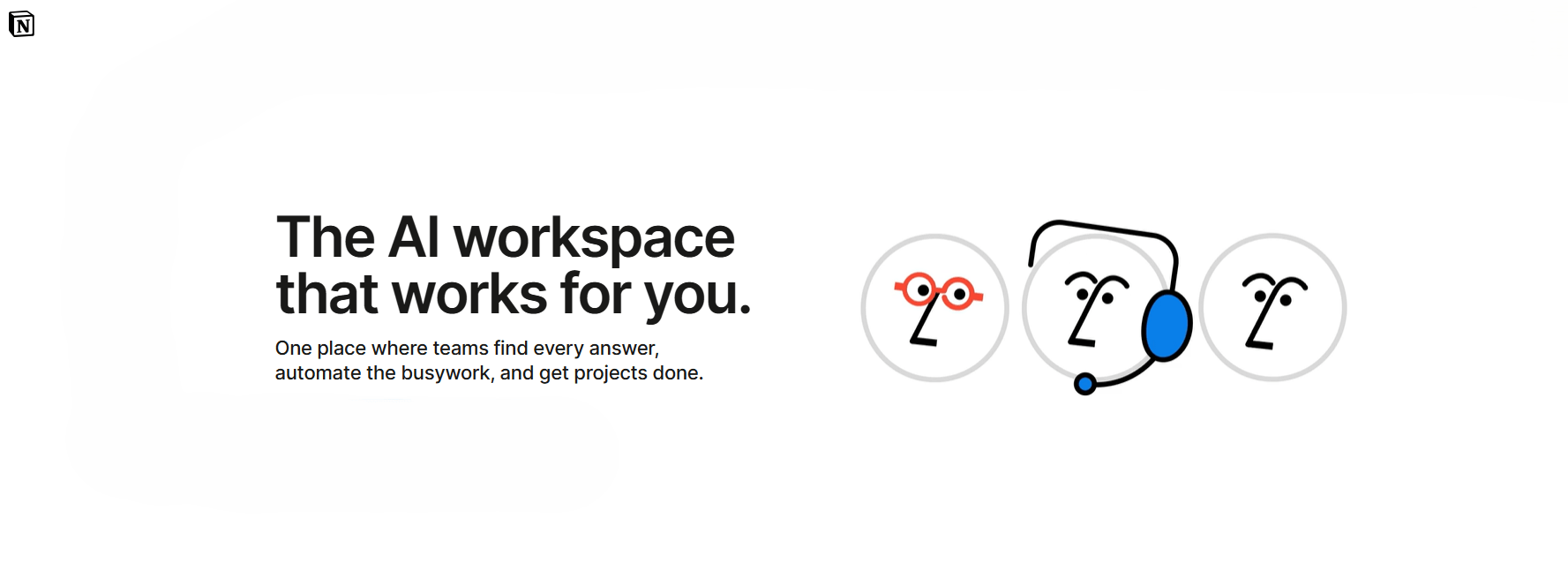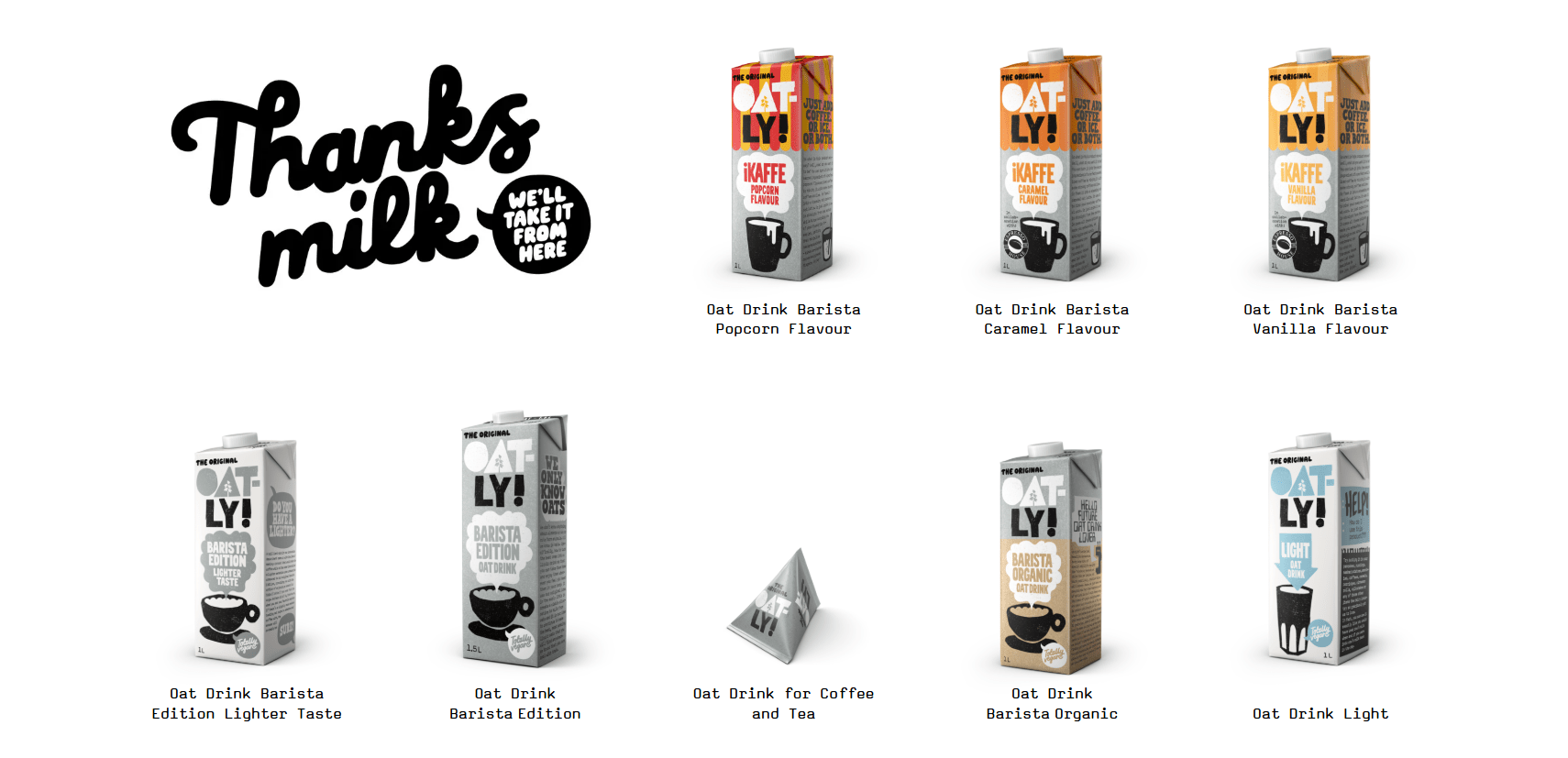
In a world full of similar offers and louder marketing, your edge comes from one thing: being clear about what makes you different, and building everything around that.
Being Good Isn’t Enough
You can have a strong product, clean design, and a compelling promise. But if buyers can’t tell—immediately—why you’re different from every other option, you’ve already lost them.
Differentiation isn’t about being better. It’s about being recognizable. It’s how you move from just another offer to the one they remember.
A smart product differentiation strategy makes your offer easier to understand, discuss, and purchase. Because when customers see your value, price becomes less of a deciding factor, and trust builds faster.
What Differentiation Does for Growth
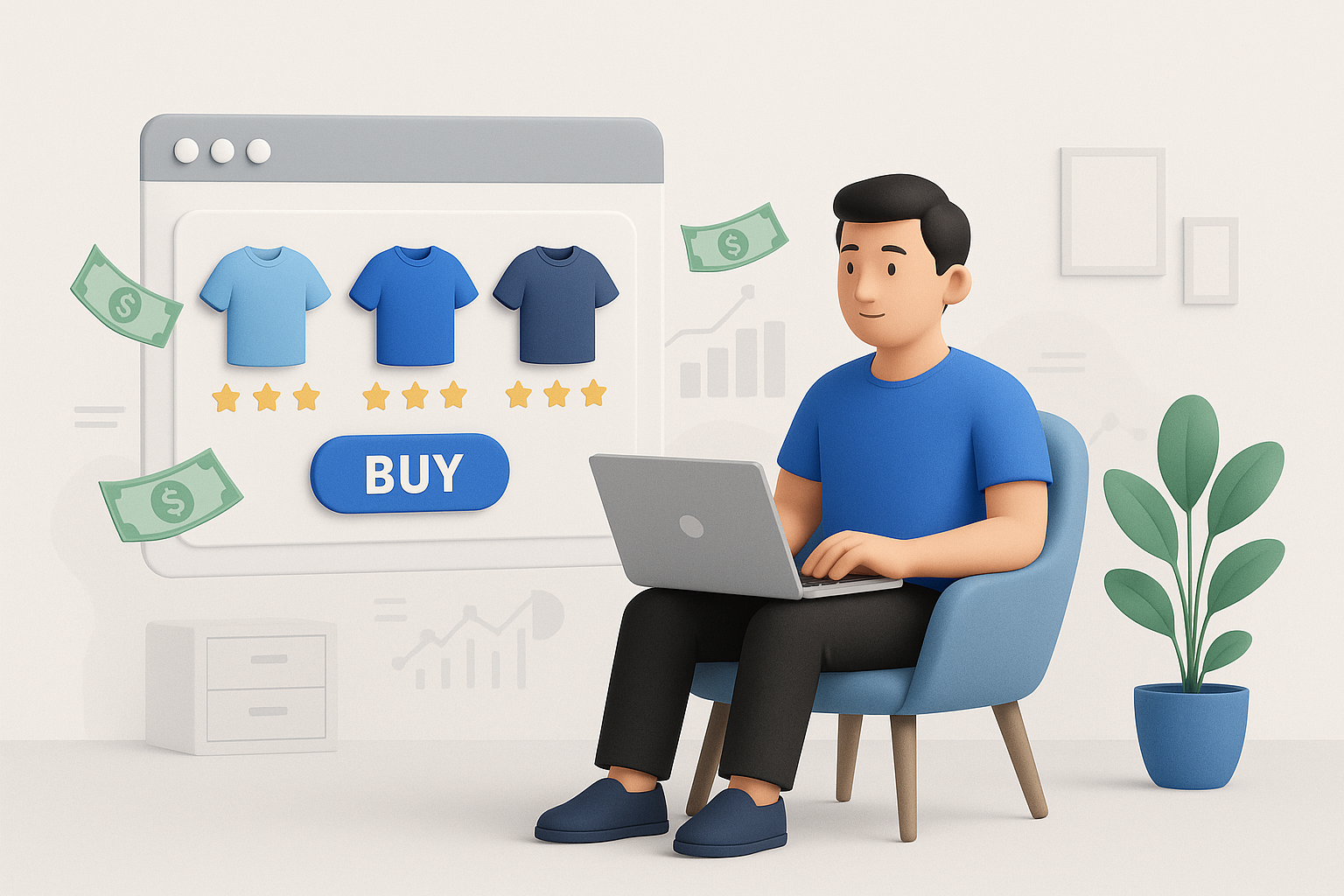
Most people think differentiation is a brand or marketing play. It’s not. It’s a business decision that guides how you build, communicate, and scale your business.
A well-defined strategy will:
- Keep your roadmap focused on features that matter, not just what’s trendy
- Make your messaging consistent across your site, ads, emails, and sales calls
- Give your sales team a clear story to lead with—one that lands fast
- Align everyone on your team around a shared understanding of value
Strong positioning eliminates the guesswork from growth. When your offer is focused, your content has a greater impact. Your campaigns move faster. And your conversions start to compound.
3 Ways to Differentiate
There are three primary ways brands successfully set themselves apart. Each one answers the same question in a different way: Why should I choose you?
1. Performance-Based Differentiation
You deliver better results. Maybe it’s speed, accuracy, reliability, or ROI. You’ve got proof—and you lead with it.
When to use it:
- Your product outperforms alternatives
- You can show a quantifiable impact
- Your audience has high-stakes problems to solve
Prompt: Where can you confidently say, “We do this better, and here’s the result to prove it”?
2. Identity-Based Differentiation
You connect on values, tone, or perspective. It’s not about being the best—it’s about being the one that fits best.
When to use it:
- You serve a specific niche or worldview
- Your tone, delivery, or community sets you apart
- Your buyers care about how you show up as much as what you offer
Prompt: What does your brand stand for that your audience already believes in?
3. Experience-Based Differentiation
You win on how the product feels to use, from onboarding to customer support to follow-up. The interaction is your edge.
When to use it:
- Your product category is crowded or commoditized
- Your team delivers an above-average customer experience
- You want to compete on ease, trust, or speed, not features
Prompt: Where in your process does your customer say, “That was surprisingly easy” or “That’s why I stick with them”?
Each type is valid. The key is knowing which one matches your audience—and making it obvious in everything you say and do.
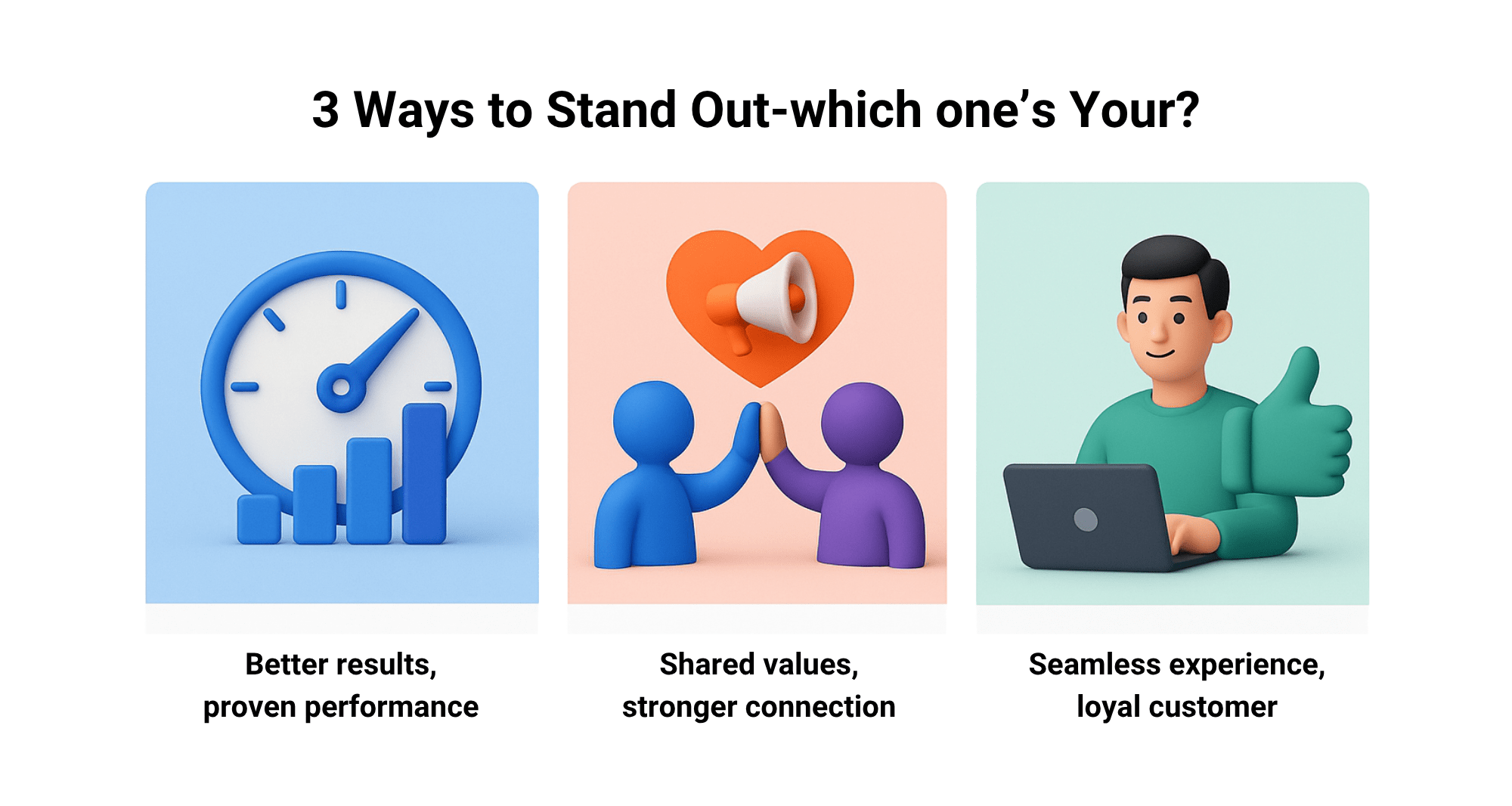
Building a Product Differentiation Strategy That Works
You don’t need to overhaul your product to stand out. You need to be more intentional about how you describe it, who it’s for, and what it solves.
1. Start with the Shift You Create
Most messaging focuses on features. The real power lies in the outcome. What’s different about your customer’s life after they use your product?
If your answer isn’t specific and emotional, keep digging.
2. Look for Gaps, Not Trends
You don’t need to do what everyone else is doing better—you need to do what they’re not doing at all. Where are customers still frustrated, confused, or underwhelmed?
The most valuable differentiation often begins with what others overlook.
3. Match Message to Stage
What a first-time visitor needs to hear isn’t the same as what a decision-maker needs right before they make a purchase. Don’t rely on one tagline or one positioning statement.
Adapt the way you explain your value to match your buyer’s location—same story, different emphasis.
How AI Helps You Get There Faster
AI doesn’t replace strategy—it enhances it, making it faster, sharper, and more scalable. Here’s how it supports smart differentiation:
Turn Customer Language Into Positioning
Utilize AI to analyze genuine customer feedback and identify the words people use to describe their challenges. Build messaging around those insights, not assumptions.
Test Your Messaging at Speed
AI tools let you A/B test dozens of headlines, email intros, or value prop statements in a fraction of the time. You’ll know what works, not just what feels good.
Deliver Personalized Value Messaging
With the right setup, your site or emails can adjust your positioning in real time based on user behavior, source, or persona.
The result? Buyers feel seen. And that connection builds trust faster than any sales pitch.
Real-World Examples That Nail It
These aren’t just brands with good design—they’ve positioned themselves with intent.
Canva
Simplified design for non-designers. They didn’t just compete with Adobe—they created a new category by focusing on speed and ease over complexity.
Notion
Flexibility for power users who dislike being confined. Their real differentiation? A customizable workspace that respects how you work, not how the tool wants you to.
Oatly
They made oat milk cool. But their edge wasn’t the product—it was their voice. Clear, bold, and unapologetically weird. That’s identity-driven strategy done right.
What Gets in the Way of Great Differentiation
1. Vague Value
If your copy says “industry-leading” or “high quality,” you’ve already lost. Be specific—or risk sounding like everyone else.
2. Trying to Be for Everyone
If you’re trying to reach everyone, your message will connect with no one. The clearer your focus, the faster your audience sees the fit.
3. Overcomplicating the Message
If it takes four scrolls to explain your value, it’s too much. Strip it down. Make it simple. Your buyer doesn’t want a lecture—they want clarity.
Why Clarity Is Your Growth Advantage
The faster people understand your difference, the sooner they’ll decide to buy or opt out. And either way, that’s a win.
Strong differentiation reduces decision friction. It creates a consistent thread from ad to site to checkout. It simplifies marketing, shortens sales cycles, and strengthens retention.
Your product doesn’t need to do more. It needs to say less, better.
That’s the real power of a sharp product differentiation strategy.
Summary
The best product doesn’t always win, but the clearest one often does.
If your differentiation is strong:
- Buyers understand your value immediately
- Your message scales across content and channels
- Your offer feels built for the customer, not just for the category
Whether you lead with performance, identity, or experience, the outcome is the same: greater clarity, increased conversions, and enhanced loyalty.
That’s not branding fluff—that’s business strategy executed with focus.
